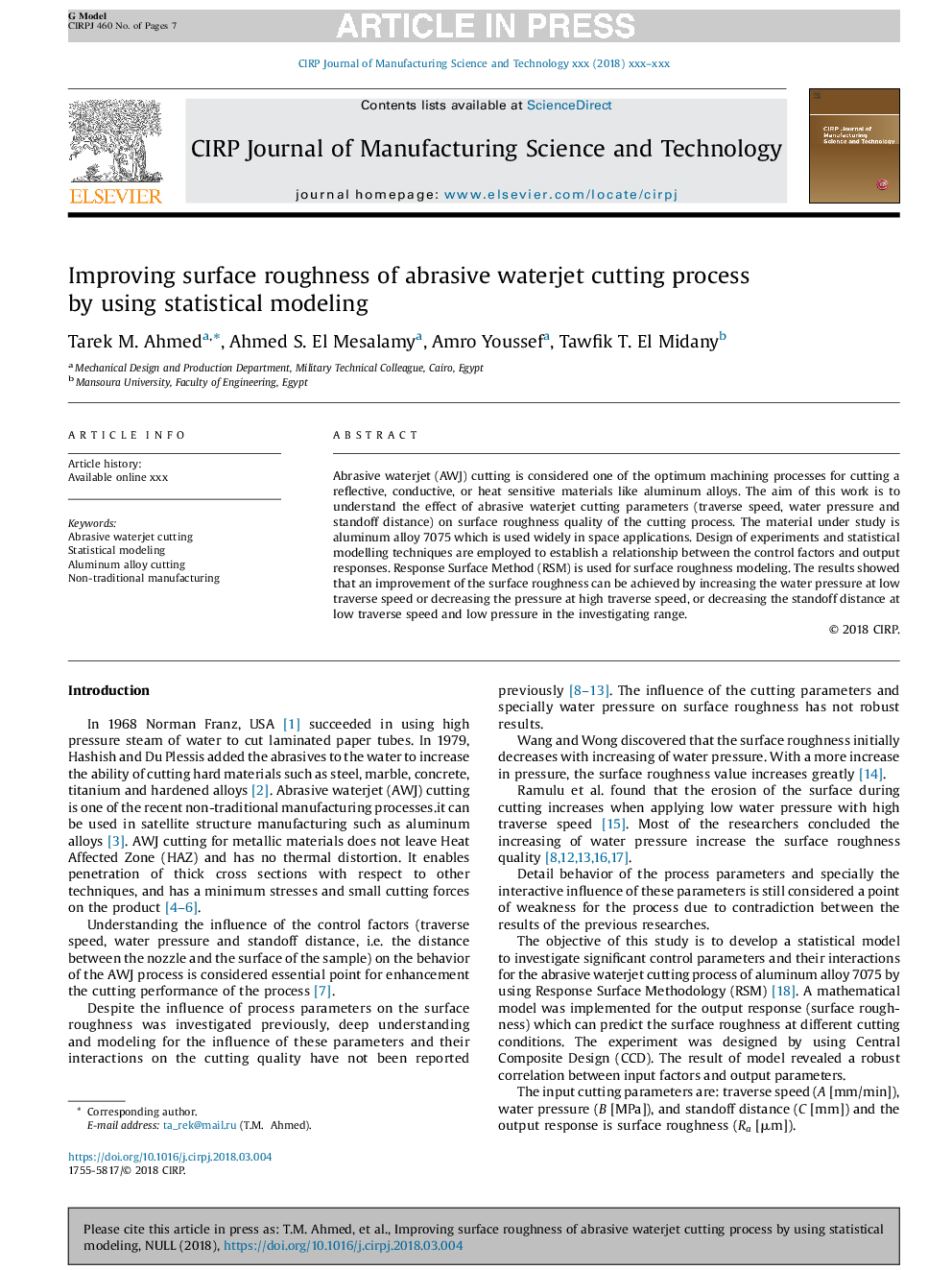| Article ID | Journal | Published Year | Pages | File Type |
|---|---|---|---|---|
| 8038842 | CIRP Journal of Manufacturing Science and Technology | 2018 | 7 Pages |
Abstract
Abrasive waterjet (AWJ) cutting is considered one of the optimum machining processes for cutting a reflective, conductive, or heat sensitive materials like aluminum alloys. The aim of this work is to understand the effect of abrasive waterjet cutting parameters (traverse speed, water pressure and standoff distance) on surface roughness quality of the cutting process. The material under study is aluminum alloy 7075 which is used widely in space applications. Design of experiments and statistical modelling techniques are employed to establish a relationship between the control factors and output responses. Response Surface Method (RSM) is used for surface roughness modeling. The results showed that an improvement of the surface roughness can be achieved by increasing the water pressure at low traverse speed or decreasing the pressure at high traverse speed, or decreasing the standoff distance at low traverse speed and low pressure in the investigating range.
Related Topics
Physical Sciences and Engineering
Engineering
Industrial and Manufacturing Engineering
Authors
Tarek M. Ahmed, Ahmed S. El Mesalamy, Amro Youssef, Tawfik T. El Midany,
